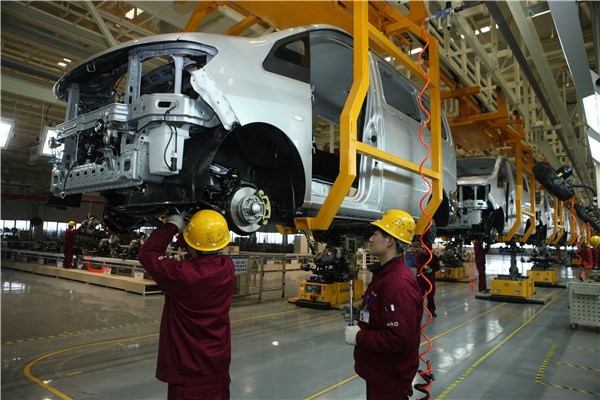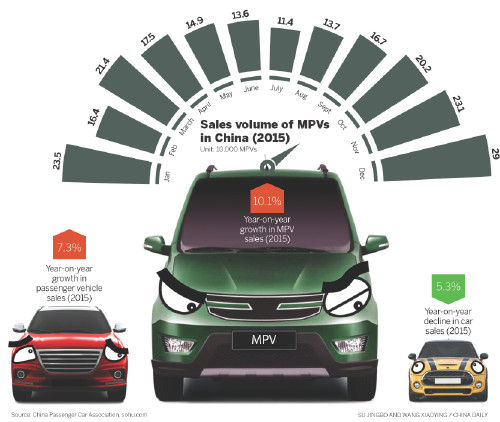
He said young Chinese couples tend to live near their parents, so the second-child policy is expected to make family units larger.
According to Reuters, Toyota officials and dealers think the Voxy's interior comfort offers a more subtle way for China's rich to signal their wealth in a climate where overt excess is frowned upon. And in China, trends that catch on at the premium end traditionally spread quickly through the rest of the market.
China's MPV segment is divided into several niche markets. The low-end models with pricing range below 100,000 yuan ($15,350) currently account for the majority of sales.
For example, the top two best-selling models last year were the Wuling Hongguang microvan and the Baojun 730 minivan, both produced by SAIC-GM-Wuling, a joint venture of General Motors, SAIC Motor Corp and Guangxi Automobile.
The popular models with a pricing of about 200,000-400,000 yuan are the Buick GL8 and the Honda Motor Co's Odyssey.
For the lucrative high-end niche, the typical model is the Mercedes-Benz V-Class, a replacement of its former Viano, with a price range from 500,000 yuan to 600,000 yuan.
Zeng Zhiling, managing director of LMC Automotive Consulting (Shanghai), said the most important reason behind the rise in MPV sales is the China Association of Automobile Manufacturers' rejig of vehicle categories in 2013, classifying minivans as MPVs.
Zeng said the rising demand for logistics and commuting in the lower tier cities and towns, as well as the expected rise in use of MPVs by high-end families in the wake of the second-child policy, are also key reasons.
"But the market for the high-end MPV is small, about tens of thousands of units every year," Zeng said. He predicts the growth rate of the segment would slow down in future, and sales would still be contributed mainly by low-end MPVs.
Zhang Yu, managing director of Automotive Foresight Co, said the segment will retain a growth rate of more than 10 percent year-on-year for the next five to six years. But the segment structure would be the same, with low-end models accounting for the majority of the sales.
"Many people say an MPV is the next breakthrough point, I am not sure about that," said Zhang, adding that MPVs lack good models that can compete with SUVs in off-road functions and in terms of reflecting the car owner's taste and social status, which is vital in China.
Zeng said most customers of MPVs are from semi-urban areas, whose budgets are between 50,000 yuan and 70,000 yuan. "The customers decide the products, not the producer," he said.



















































